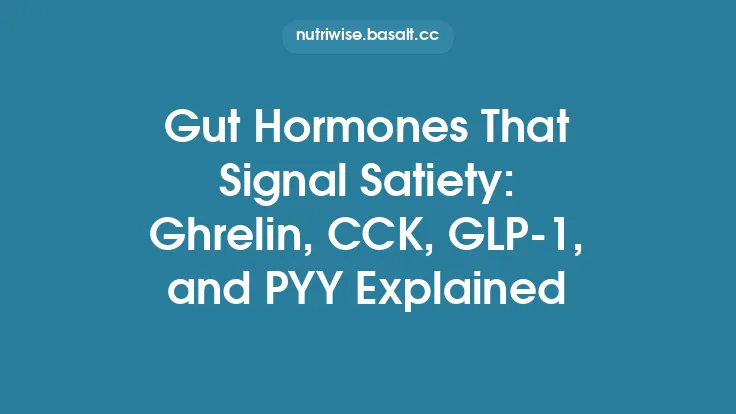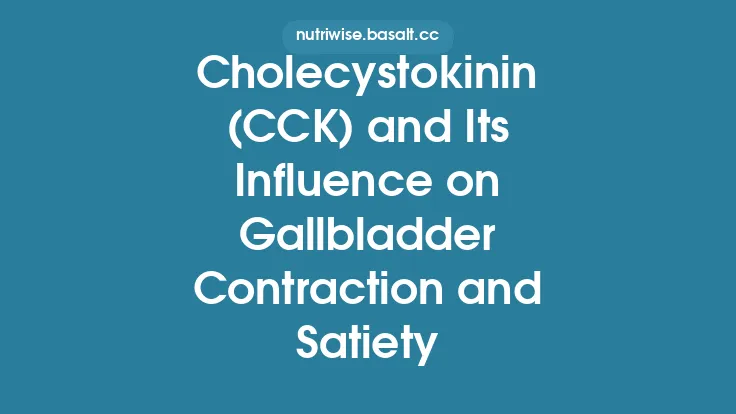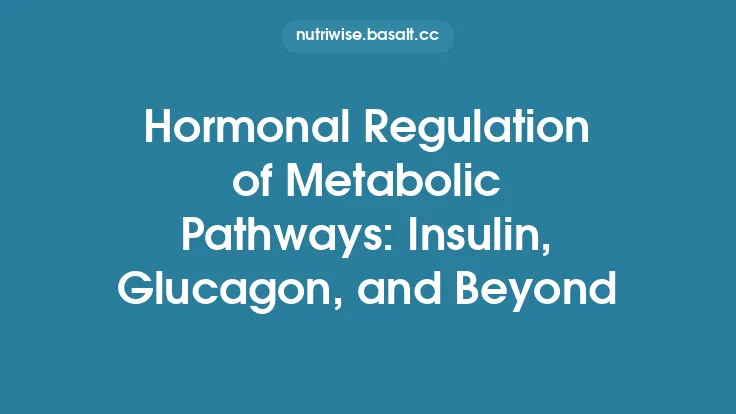GLP‑1 (glucagon‑like peptide‑1) is a 30‑amino‑acid peptide derived from the proglucagon gene that has emerged as a pivotal regulator of gastrointestinal function and energy intake. Although originally identified for its insulin‑otropic properties, extensive research over the past two decades has revealed that GLP‑1 exerts a broad spectrum of actions that influence how the gut processes nutrients and how the brain perceives hunger and satiety. This article provides a comprehensive, evergreen overview of GLP‑1’s role in digestive regulation and appetite control, emphasizing molecular mechanisms, physiological contexts, and translational relevance.
Molecular Structure and Biosynthesis of GLP‑1
GLP‑1 belongs to the glucagon peptide family, sharing a conserved N‑terminal sequence with glucagon, oxyntomodulin, and glicentin. The biologically active forms in humans are GLP‑1(7‑36)NH₂ and its N‑terminally truncated counterpart GLP‑1(7‑37). Both arise from post‑translational processing of the proglucagon precursor, a 180‑kDa protein encoded by the GCG gene located on chromosome 2.
In the intestinal L‑cells, proglucagon undergoes tissue‑specific cleavage by the prohormone convertase PC1/3, yielding GLP‑1, GLP‑2, oxyntomodulin, and glicentin. The L‑cell population is dispersed throughout the distal small intestine (ileum) and colon, with a higher density in the distal ileum. The secretory granules store mature GLP‑1 in a protected environment, ready for rapid exocytosis upon nutrient stimulation.
Physiological Secretion Triggers and Patterns
GLP‑1 release is tightly coupled to the presence of nutrients in the lumen, particularly:
- Carbohydrates – Glucose and maltodextrin are potent stimulators, acting through sodium‑glucose cotransporter‑1 (SGLT1) and sweet‑taste receptors (T1R2/T1R3) on L‑cells.
- Lipids – Long‑chain fatty acids activate G‑protein‑coupled receptors such as GPR40 (FFAR1) and GPR120, promoting GLP‑1 exocytosis.
- Proteins/Peptides – Certain di‑ and tripeptides engage the peptide transporter PEPT1, eliciting GLP‑1 secretion.
The secretion exhibits a biphasic pattern: an early rapid phase within minutes of nutrient entry, followed by a sustained second phase lasting up to several hours. This temporal profile aligns GLP‑1’s actions with the post‑prandial period, ensuring that its effects on gut motility and satiety are appropriately timed.
Receptor Signaling Pathways in Peripheral Tissues
GLP‑1 exerts its peripheral actions through the GLP‑1 receptor (GLP‑1R), a class B G‑protein‑coupled receptor (GPCR) expressed on enteroendocrine cells, vagal afferents, pancreatic β‑cells, and select smooth‑muscle cells. Binding of GLP‑1 induces a conformational change that activates the Gαs subunit, leading to:
- Adenylate Cyclase Activation – Elevation of intracellular cyclic AMP (cAMP).
- Protein Kinase A (PKA) Stimulation – Phosphorylation of downstream targets that modulate ion channels and secretory machinery.
- Exchange Protein Directly Activated by cAMP (Epac) Pathway – Influences calcium dynamics and exocytosis.
In the gut, GLP‑1R activation on enteric neurons and smooth muscle cells contributes to a modest reduction in gastric motility, thereby prolonging gastric emptying time. This effect, while modest compared with the dedicated gastric‑emptying regulators, helps to synchronize nutrient delivery with the absorptive capacity of the intestine, indirectly supporting satiety signals.
Central Nervous System Actions and Appetite Suppression
The most striking influence of GLP‑1 on energy balance originates from its actions within the central nervous system (CNS). GLP‑1‑producing neurons reside in the nucleus of the solitary tract (NTS) of the brainstem and project widely to hypothalamic nuclei, including the arcuate nucleus (ARC) and paraventricular nucleus (PVN). Two principal mechanisms underlie GLP‑1‑mediated appetite control:
- Direct Activation of CNS GLP‑1R
- ARC – GLP‑1R activation stimulates pro‑opiomelanocortin (POMC) neurons, which release α‑melanocyte‑stimulating hormone (α‑MSH) to activate melanocortin‑4 receptors (MC4R), a well‑established anorexigenic pathway.
- PVN – GLP‑1R signaling enhances the activity of corticotropin‑releasing hormone (CRH) neurons, contributing to reduced food intake.
- Modulation of Vagal Afferent Signaling
GLP‑1 released from intestinal L‑cells can act on GLP‑1R expressed on vagal afferent fibers. This peripheral‑to‑central communication amplifies satiety signals transmitted to the NTS, reinforcing the central anorectic response.
Functional imaging studies in humans have demonstrated that exogenous GLP‑1 administration reduces activation in brain regions associated with reward (e.g., the orbitofrontal cortex) while enhancing activity in areas linked to satiety (e.g., the insula). These neuroimaging findings corroborate the peptide’s capacity to diminish the hedonic drive to eat, beyond purely homeostatic mechanisms.
Interaction with Other Satiety Signals
GLP‑1 does not act in isolation; it integrates with a network of gut‑derived and central signals to fine‑tune appetite regulation:
- Peptide YY (PYY) – Co‑released from L‑cells, PYY₃₋₃₆ synergizes with GLP‑1 to activate Y₂ receptors on vagal afferents, reinforcing satiety.
- Cholecystokinin (CCK) – While CCK primarily stimulates gallbladder contraction, it also promotes GLP‑1 release via CCK₁ receptors on L‑cells, creating a feed‑forward loop that enhances post‑prandial satiety.
- Leptin – Central leptin signaling can potentiate GLP‑1R‑mediated activation of POMC neurons, suggesting cross‑talk between adiposity signals and gut‑derived incretins.
These interactions illustrate how GLP‑1 serves as a hub that consolidates multiple nutrient‑sensing pathways into a coherent satiety response.
Clinical Implications and Therapeutic Exploitation
The dual capacity of GLP‑1 to modulate post‑prandial gut function and suppress appetite has spurred the development of GLP‑1‑based therapeutics, primarily for metabolic disease but with notable implications for digestive health:
- GLP‑1 Receptor Agonists (GLP‑1RAs) – Long‑acting analogues (e.g., liraglutide, semaglutide) resist degradation by dipeptidyl peptidase‑4 (DPP‑4) and provide sustained receptor activation. Clinical trials consistently report reduced caloric intake, weight loss, and improved satiety scores, underscoring the peptide’s appetite‑controlling potency.
- DPP‑4 Inhibitors – By prolonging endogenous GLP‑1 half‑life, these agents modestly enhance satiety, though the effect size is smaller than that of GLP‑1RAs.
- Potential Gastrointestinal Applications – Emerging data suggest that GLP‑1RAs may alleviate symptoms of functional dyspepsia by normalizing gastric emptying rates and reducing post‑prandial discomfort, though dedicated studies are ongoing.
Importantly, the therapeutic use of GLP‑1RAs must balance appetite suppression with potential side effects such as nausea, which are thought to arise from central GLP‑1R activation and delayed gastric emptying. Understanding the mechanistic basis of these adverse events is an active area of investigation.
Future Directions in Research
Several avenues promise to deepen our understanding of GLP‑1’s role in digestive regulation and appetite control:
- Selective GLP‑1R Modulators – Designing biased agonists that preferentially activate anorectic pathways while sparing nausea‑inducing circuits could improve tolerability.
- Gut Microbiota Interactions – Recent studies indicate that microbial metabolites (e.g., short‑chain fatty acids) can modulate L‑cell activity, suggesting a microbiome‑GLP‑1 axis that influences satiety.
- Peripheral vs. Central GLP‑1 Sources – Disentangling the relative contributions of gut‑derived versus brain‑derived GLP‑1 to appetite control may reveal novel targets for obesity treatment.
- Combination Therapies – Co‑administration of GLP‑1RAs with other satiety hormones (e.g., PYY analogues) is being explored to achieve additive or synergistic weight‑loss effects.
Continued interdisciplinary research integrating molecular biology, neurophysiology, and clinical science will be essential to harness the full therapeutic potential of GLP‑1 while minimizing unwanted effects.
In summary, GLP‑1 stands as a central player in the intricate choreography of nutrient sensing, gut motility, and appetite regulation. Its ability to translate the presence of ingested food into hormonal signals that curb further intake underscores its importance not only in normal physiology but also as a target for interventions aimed at controlling body weight and improving gastrointestinal well‑being.





